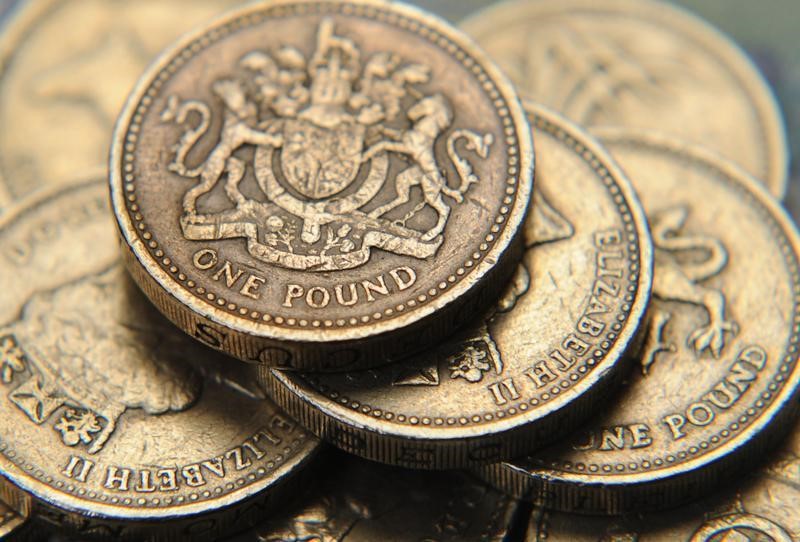By Ross Finley
LONDON (Reuters) - The battered British pound is set for a slow burn lower along with diminished growth prospects once the UK government triggers official proceedings for divorce from the European Union as it is expected to do later this month, a Reuters poll found.
While the survey forecasts no dramatic fall in the coming months for sterling - already down 17 percent against the dollar and 12 percent against the euro since the June 23 shock vote to leave the EU - there appears to be no hope for recovery, either.
Foreign exchange strategists from more than 60 banks and research institutions are pegging the pound at $1.23 in one month then roughly $1.21 in the three-, six-, and one-year horizons, unchanged from last month's poll.
Against the euro, sterling is expected to trade between 85 pence and 87 pence at the same period-ends, of course with plenty of scope for volatility in between.
The forecasts suggest order in the pound's deterioration as Britain attempts to disentangle itself from several decades of being an integral part of the EU and then renegotiate a new arrangement with its biggest trading partner.
A sharply increased likelihood of a March Federal Reserve interest rate hike, spurred on by hawkish comments from a flurry of Fed officials over the past week, should also favor the dollar over sterling in coming months.
"GBP/USD will come under further downward pressure on a Fed interest rate rise as the negative U.S-UK interest rate differentials widen," noted Richard Grace, FX analyst at Commonwealth Bank of Australia.
"The UK’s large current account deficit virtually ensures this development. Further Brexit developments are forthcoming, which we see as generating foreign direct investment capital outflows from the UK," he noted.
Separate Reuters polls of economists are less optimistic than the Bank of England on the prospects for growth this year, saying the tone of negotiations will dictate performance, but a consumer spending slowdown seems imminent.[ECILT/GB]
Stability in the pound would be a good sign for businesses. But it also implies that the initial boost to the economy through cheaper exports is probably over and the effects from higher consumer prices are now kicking in.
There is also little incentive for forecasters to make radical changes to their existing views until there is some sense of how well the EU negotiations will go. That may explain why the outlook remains relatively static in recent months.
Most experts with experience working directly with or in the EU as well as current EU officials have been consistent in warning that the two years provided under the Article 50 framework will not be enough time to cover everything.
The government's Article 50 bill is expected to pass through the House of Lords, Parliament's upper chamber, this month. Prime Minister Theresa May has said she intends to trigger those formal divorce proceedings by the end of March.
But the end-March consensus forecasts imply no change by then to where the pound is trading, around $1.23.
Analysts at Danske Bank, who say the pound will fall to $1.19 by month-end, said: "We project a rewidening of the Brexit risk premium embedded into sterling over the coming months."
The most pessimistic forecast is from Deutsche Bank (DE:DBKGn), which sees sterling plunging to $1.14 by the end of March. NatWest Markets, on the other extreme, say the pound will rally to $1.29.
Looking on a 12-month horizon, the range of forecasts was wider still, from a low of $1.05 to a high of $1.35, far below the $1.50 the pound was trading at just before the referendum.
Forecast ranges for euro/sterling were also wide on a 12-month horizon, from a low of 76 pence to the one forecaster seeing parity to the euro. There were no forecasts for the pound to reach parity to the dollar in the next 12 months.

Reuters polls before the referendum vote were accurate in predicting where the pound would go in the event of a vote to leave the EU, correctly forecasting a 9 percent drop in the immediate aftermath.
(Polling by Vartika Sahu)